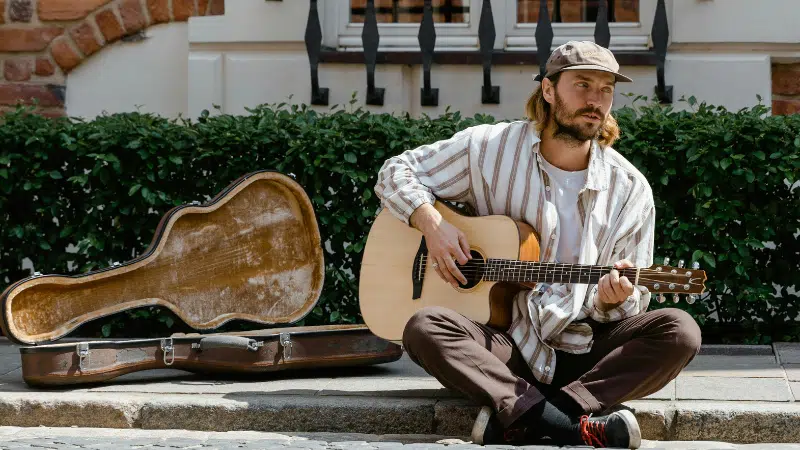Funding anything completely on your own as an independent artist can be a scary thought… Studio time, music videos, merch, touring, it all adds up quick. But no need to fear, you’ve got options at your disposal to take some of the weight off. Crowdfunding is one of those options, and it has become one of the most powerful ways for artists to not only raise money for projects but also build stronger connections with their fans at the same time.
Think of it less like “asking for money” and more like offering your most dedicated fans a chance to be a part of your journey. For those who truly care about your success, supporting you feels like an investment in something they already love, and there’s no better feeling than seeing your favorite underground artist make it big. In this post, we’ll give you everything you need to know to master the art of crowdfunding in no time…
Crowdfunding 101 for Independent Artists: Everything You Need To Know
Choosing The Right Platform
Each crowdfunding platform is unique, and the one you choose can make a big difference in your results. The best fit depends on two key factors: (1) what kind of project you’re working on and (2) how you want to engage your fans.
Kickstarter is one of the most popular choices for one-time projects like funding an album, tour, or music video. Just keep in mind it’s all or nothing. If you don’t hit your goal, you don’t get the funds. That can be motivating, but also a bit risky if you set the bar too high. Indiegogo works in a similar way, but it gives you more flexibility since you can choose between “all or nothing” or “keep what you raise,” which makes it way less intimidating if you’re unsure how much traction your campaign will get.
And if you’re looking for something more ongoing, Patreon may be a better fit. Instead of raising money for one big project, fans can subscribe monthly for perks, aka things like exclusive songs, behind-the-scenes content, or even merch discounts. Think of it as a steady income rather than a one-time funding push. On the other hand, GoFundMe is a bit more casual and straightforward about it. It doesn’t rely as heavily on tiered rewards and is more often used for personal or urgent funding needs. It’s not as “music-focused,” but it works if your fans simply want to help out.
At the end of the day, it comes down to asking yourself: Do I need a one-time boost to get this project off the ground, or do I want to build a long-term support system? Answering that question will help point you in the right direction.
Setting Realistic Goals
Before you dive into any kind of campaign, you have to set a clear, realistic goal. To do this, list out every expense your project needs. That means costs for recording and mixing, mastering, music videos, artwork, distro, promo, shipping for any rewards you plan to offer, etc. And don’t forget to factor in platform fees and leave a little bit of leeway for any unexpected expenses, too.
Now, once you’ve got your total in mind, break it down into more manageable parts. For example, if your goal is $5,000, break down how much each part of your project costs, like $1,500 for recording, $800 for artwork, $700 for a music video, and use that breakdown to help design your reward tiers. Make these as clear as possible to your fans. This way, they can see exactly what their support is going toward, building more trust and excitement as you reach each goal.
Transparency is key here. When you share with your fans exactly how you arrived at your number, they’ll feel more confident that their contribution is making a real impact.
Crafting Your Campaign Story
Your campaign story is like the beating heart of your crowdfunding efforts. This is where you connect with fans on a personal level and show them why your project matters. Fans respond best to real passion and personality more than polished marketing speak, so be as authentic as possible here. If you can, a video is a must. Even a short, 1-2 minute clip introducing yourself and the project can make a huge difference. There’s a completely different vibe to reading a wall of text versus watching a video full of personality. If you really want to connect, consider including:
- Behind-the-scenes footage of your creative process
- A brief introduction where you talk about your excitement for the project
- Personal anecdotes or stories that inspired the project
The worst things you can do are act all nonchalant, ramble on about how bad you need money for too long, or completely ignore visuals altogether. Just share your story in a concise way and highlight the most compelling parts. Let your unique voice shine through, the passion behind your goal. And if you really can’t manage a short video, some simple images can make your pitch a million times more engaging. You need to give your fans a reason to care. After all, they’re reaching into their own pockets to support you!
—–
Want more? 👀 📚 Check these out…
Why Real Music Marketing is More Than Just Promotion… It’s Strategy
The Independent Artist Funnel: How to Think Like a Brand
Why Symphonic’s SplitShare Feature Outshines the Competition in Royalty Splitting
How to Protect Your Mental Health on Social Media as an Artist
——
Offering Rewards
Not everyone is already head over heels in love with you and ready to fund your goals just because you asked nicely. So how else can you convince people to support your cause? Rewards are one of the biggest motivators for fans to back your campaign. They give supporters a tangible reason to contribute and make them feel like part of the experience. The key is to offer perks that are meaningful, cool, and achievable for you to deliver. Think beyond the usual “signed CD” or “sticker pack.” Need some ideas to get the creativity flowing? Consider these:
👕 Exclusive merch: T-shirts, posters, limited-edition items
🎧 Access: Early listens, behind-the-scenes videos, or private live streams
🤝 Experiences: Studio visits, virtual hangouts, or personalized messages
🎨 Collectibles: Handwritten lyrics, custom artwork, or special edition releases
In addition, we highly recommend you tier your rewards. Offer something small and affordable for casual fans, mid-level rewards for those who want to invest a bit more, and big-ticket perks for super fans willing to go all in. This makes it easy for everyone to participate at a level they’re comfortable with.
And side note, a common mistake artists make here is overpromising. Don’t offer rewards you can’t realistically deliver on time. Fans will be excited to support you, but failing to follow through can damage that trust and future support.
Marketing Your Campaign
Launching your campaign is just the beginning. If no one knows about it, it won’t go very far. Marketing is what turns intention into action, and it’s all about creating awareness, excitement, and engagement. Start with the fans you already have. Your email list, social media followers, and even friends and family can help you get momentum early. Consider reaching out personally whenever possible, too. It makes people feel appreciated and more likely to contribute.
PRO TIP: If you want to build a reliable fanbase that lasts, buys tickets, supports your music, and sticks around for the long haul, email is one of the best tools you’ve got. Check out, How To Build a Real Fanbase in the Age of Algorithms with Email Marketing to get a full rundown and learn to master the email marketing game. 🧠
Make sure you’re using your social media strategically by teasing the project with snippets of songs, behind-the-scenes shots, or previews of the rewards. Build anticipation with countdowns leading up to the campaign launch, and give fans easy ways to spread the word, like shareable graphics or a campaign-specific hashtag. Anything you can do to keep everyone as involved as possible in your journey works wonders.
One thing you should absolutely avoid, though… is spamming. Constantly asking for money can definitely turn people off. Instead, focus on storytelling and showing why the project matters. Your passion, drive, and authenticity will do more to motivate support than anything.
Keeping Your Supporters Engaged
Once someone contributes to your campaign, the work doesn’t end there. This is when your relationship with fans is truly tested. Keeping your supporters involved throughout your project shows that you value their contribution and builds long-term support.
That said, make sure you stay as responsive and engaged as possible. Keep them updated on socials, share progress on your music, milestones you hit as you raise the money, answer questions, thank fans personally, and acknowledge their support as often as you can. Feeling appreciated and seen by you is what turns casual supporters into loyal fans who are more likely to spread the word about your project. And if you really want to raise engagement, consider letting fans weigh in on small creative choices, like merch designs, lyric snippets, artwork concepts, setlist choices, etc. These little touches make a world of difference in growing that engagement, but also deepening the fan connection.
Last but not least, always follow through on any promises you make to your audience. Keep them updated when there are any delays (if any), and be transparent about how things are going. It’s the least you can do in exchange for their support, and that transparency builds the relationship even further.
To wrap things up…
Think of crowdfunding as more than just raising money. It’s a chance to build deeper connections with your fans and give them a chance to get involved in your journey and have a direct hand in your success. Use it as an opportunity to experiment, share your creative process, and invite your fans to be a part of something bigger. When they feel invested, they’ll celebrate your wins right along with you. And at the heart of it, that’s what matters most.
Good luck!



